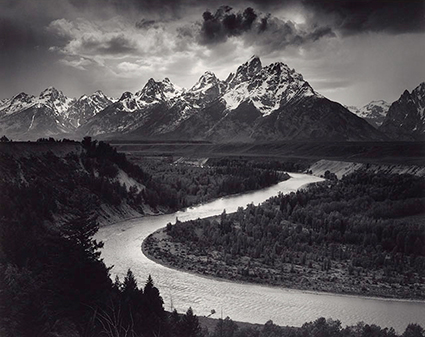It has been a very slow year photographically for me but finally, I managed to get out of my office and re-discover one of my long time neglected locations – the Cascades.
I’ve been here a few times before but never on a dedicated trip and so I was very excited to be heading this way and hoped that I’ll be able to spend some time exploring the area. But as it often is in a photographer’s life, despite the weather promising a good opportunities, it turned its wet side on me and pushed me back home, way sooner then I expected.
The first evening looked very bleak and uninteresting in the beginning but I went to my selected spot regardless, hoping that some abrupt cloud change would happen. I experienced this scenario countless times…after all, that’s what pursuing photographs is all about, playing a ball with the environment and either succeed or humbly accept the failure.
Being here a few times before, I saw this beautifully curving river into the great wilderness of the Red Hills and Olivine Ranges in South Westland and I thought, well, this would make a very beautiful photograph…the scene also looked somewhat familiar to me.
I haven’t come across any other river like this, which would curve its way so poetically, so gently into the great unknown and back then I thought to myself, I need to return and try to make a nice photograph of this scene.

Cascade River with moody sunset over Red Hills in distance, West Coast, South Westland, UNESCO World Heritage Area, New Zealand, NZ
…and so here I am, looking into the distance on the overcast evening, thinking to myself, what can I pull out of these conditions. With the weather like this though, you never know what can happen. Unfortunately, there was no drama in the clouds I hoped for, instead, very bleak, overcast skies. These overcast skies often block any colouring on the sky and the sunset just fade away without any colour at all. Sometimes, however, when there is a bit of a gap on the horizon, or weaker clouds, the sun rays may get through and paint some parts of the sky with a bit of a colour. And that’s exactly what happened to me here. The sun, for a brief moment, cast a soft orange hues to the sky but being diffused by the weaker clouds’ coverage, the orange hues spilled all over the scene as well, reflecting beautifully on the river below.
Suddenly, my blood rushed into my head and I thought I might actually have something…
When I started to process my files, I started to see the wonderful results in both, in colour, as well as in Black and White rendition of the image.

Cascade River with moody sunset over Red Hills in distance, West Coast, South Westland, UNESCO World Heritage Area, New Zealand, NZ
Staring at the B&W version of the image, suddenly, it dawned on me, that it reminded me principally one of the Ansel Adams photographs, Snake River he made 75 years ago.
Please, don’t get me wrong here, I’m not comparing my image with Ansel Adams, instead, I’m trying to demonstrate how learning from masters we admire in our lives, can inspire and subconsciously help us to squeeze a better bits from ourselves.
Enjoy!
For more images from this part of West Coast please visit my stock gallery Cascades, South Westland.
Thank you.











 Follow us on Twitter
Follow us on Twitter Connect via Linkedin
Connect via Linkedin Become our Facebook Fan
Become our Facebook Fan